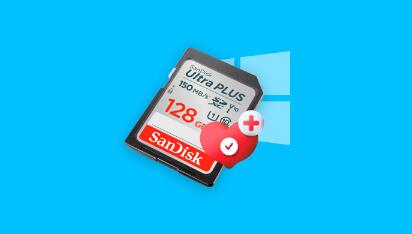With various types of memory cards available, such as SD cards, the 16GB variant remains a popular choice due to its balance between affordability and storage space. If you’re wondering how many pictures a 16GB SD card can hold, you’re not alone. This question is central to many people’s decision-making process when choosing the right storage solution for their photography needs.
File Sizes
Before diving into the specifics, it’s important to understand what affects the size of digital photos. The file size of a photo is influenced by several factors:
Resolution: This is the number of pixels in an image, typically measured in width x height. Higher resolution images contain more detail and, therefore, larger file sizes. For example, a 12-megapixel image will generally be larger in file size than an 8-megapixel image.
File Format: Photos can be saved in various formats, such as JPEG, RAW, PNG, and TIFF. Each format has different characteristics and file sizes. JPEG files are compressed and generally smaller, while RAW files are uncompressed and much larger.

Compression: Compression reduces file size by eliminating redundant data. JPEG uses lossy compression, which reduces file size but may slightly affect image quality. On the other hand, formats like PNG use lossless compression, which retains all image data but often results in larger files.
Image Content: The complexity of the image also affects its file size. Photos with more detail and color variations will typically have larger file sizes compared to simpler, less detailed images.
Estimating Storage Capacity
To estimate how many pictures a 16GB SD card can hold, we need to make some assumptions about the average file size of the photos you’ll be taking. Here’s a breakdown based on common photo resolutions and formats:
Low Resolution (3-5 Megapixels): For images with a resolution of 3-5 megapixels, the average JPEG file size is around 1-2 MB. With these settings, a 16GB SD card can hold approximately 8.000-16.000 photos.
Medium Resolution (8-12 Megapixels): Photos with an 8-12 megapixel resolution typically have file sizes ranging from 2-5 MB. For these images, a 16GB SD card can store roughly 3.200-8.000 photos.
High Resolution (16-24 Megapixels): At higher resolutions, such as 16-24 megapixels, the file sizes can range from 5-10 MB. In this case, a 16GB SD card would be able to hold about 1.600-3.200 photos.
RAW Format: RAW files are much larger due to their uncompressed nature. The average file size for a RAW image can be between 20-40 MB, depending on the camera and settings. Thus, a 16GB SD card would typically hold around 400-800 RAW images.
TIFF and PNG Formats: TIFF and PNG files are generally larger than JPEG files due to their lossless compression. For example, a TIFF file could be anywhere from 10-30 MB. With these formats, a 16GB SD card might hold approximately 500-1.600 images.
Factors Influencing Actual Capacity
While the above estimates provide a general idea, actual capacity can vary based on several additional factors:
Camera Settings: Different cameras may have variations in file sizes based on their specific settings, such as image quality, sharpness, and noise reduction.
Additional Files: Remember that an SD card might also store other types of files, such as videos or application data, which can reduce the space available for photos.
Card Formatting: The format of the SD card itself can affect available storage. The card’s file system and any pre-installed software can use up some of the space.
File Overhead: Metadata and additional data embedded in the files (such as EXIF information) can slightly increase the file size.
Maximizing SD Card Storage
To make the most of your 16GB SD card, consider the following tips:
Adjust Resolution: Lowering the resolution of your photos can significantly increase the number of images you can store. This is particularly useful for casual photography where ultra-high resolution is not necessary.
Use JPEG Format: If file size is a concern and you don’t require the highest quality, saving photos in JPEG format with moderate compression can help maximize storage.
Manage Your Files: Regularly transferring photos to a computer or cloud storage can free up space on your SD card and prevent it from becoming full unexpectedly.
Consider Multiple Cards: If you frequently take high-resolution photos or shoot in RAW format, having multiple SD cards or a higher-capacity card might be more practical.
Regular Backups: Ensure that you back up your photos regularly to prevent data loss and to keep your SD card from reaching capacity.
The number of pictures a 16GB SD card can hold is influenced by various factors including image resolution, file format, and compression settings. By understanding these elements, you can make informed decisions about managing your photo storage needs. Whether you’re a casual photographer or a professional, knowing how to optimize and manage your SD card’s storage will help ensure you capture and preserve your memories effectively.
With proper planning and usage, a 16GB SD card offers a versatile and ample storage solution for many photography needs, providing a balance between capacity and affordability.
About us and this blog
Panda Assistant is built on the latest data recovery algorithms, ensuring that no file is too damaged, too lost, or too corrupted to be recovered.
Request a free quote
We believe that data recovery shouldn’t be a daunting task. That’s why we’ve designed Panda Assistant to be as easy to use as it is powerful. With a few clicks, you can initiate a scan, preview recoverable files, and restore your data all within a matter of minutes.
Subscribe to our newsletter!
More from our blog
See all postsRecent Posts
- How to recover lost files on flash drive? 2024-12-26
- What can messed up flash drive cybersecurity? 2024-12-26
- My flash drive isn’t working on adaptor mac 2024-12-26










